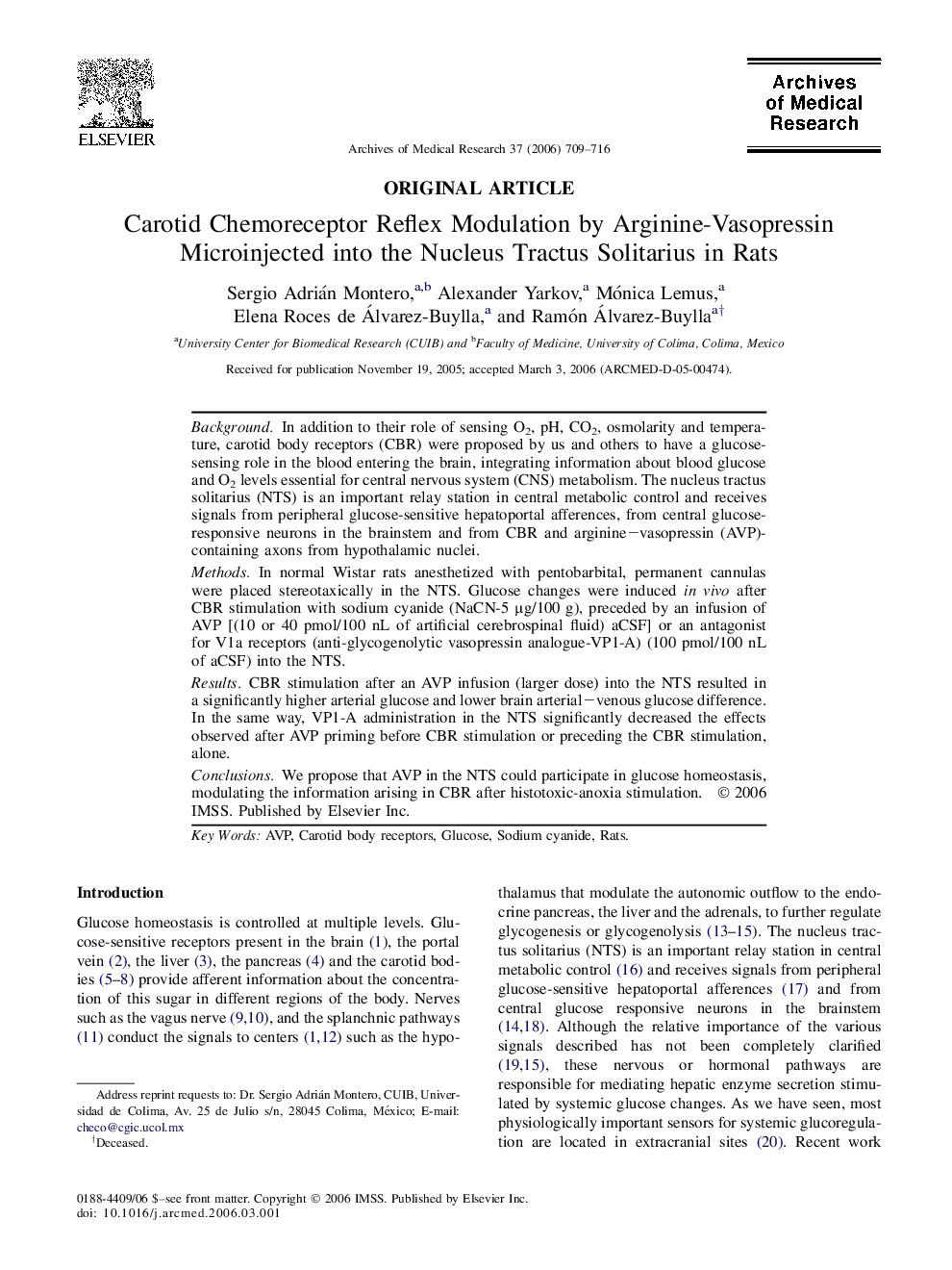| Article ID | Journal | Published Year | Pages | File Type |
|---|---|---|---|---|
| 3447802 | Archives of Medical Research | 2006 | 8 Pages |
BackgroundIn addition to their role of sensing O2, pH, CO2, osmolarity and temperature, carotid body receptors (CBR) were proposed by us and others to have a glucose-sensing role in the blood entering the brain, integrating information about blood glucose and O2 levels essential for central nervous system (CNS) metabolism. The nucleus tractus solitarius (NTS) is an important relay station in central metabolic control and receives signals from peripheral glucose-sensitive hepatoportal afferences, from central glucose-responsive neurons in the brainstem and from CBR and arginine–vasopressin (AVP)-containing axons from hypothalamic nuclei.MethodsIn normal Wistar rats anesthetized with pentobarbital, permanent cannulas were placed stereotaxically in the NTS. Glucose changes were induced in vivo after CBR stimulation with sodium cyanide (NaCN-5 μg/100 g), preceded by an infusion of AVP [(10 or 40 pmol/100 nL of artificial cerebrospinal fluid) aCSF] or an antagonist for V1a receptors (anti-glycogenolytic vasopressin analogue-VP1-A) (100 pmol/100 nL of aCSF) into the NTS.ResultsCBR stimulation after an AVP infusion (larger dose) into the NTS resulted in a significantly higher arterial glucose and lower brain arterial–venous glucose difference. In the same way, VP1-A administration in the NTS significantly decreased the effects observed after AVP priming before CBR stimulation or preceding the CBR stimulation, alone.ConclusionsWe propose that AVP in the NTS could participate in glucose homeostasis, modulating the information arising in CBR after histotoxic-anoxia stimulation.
